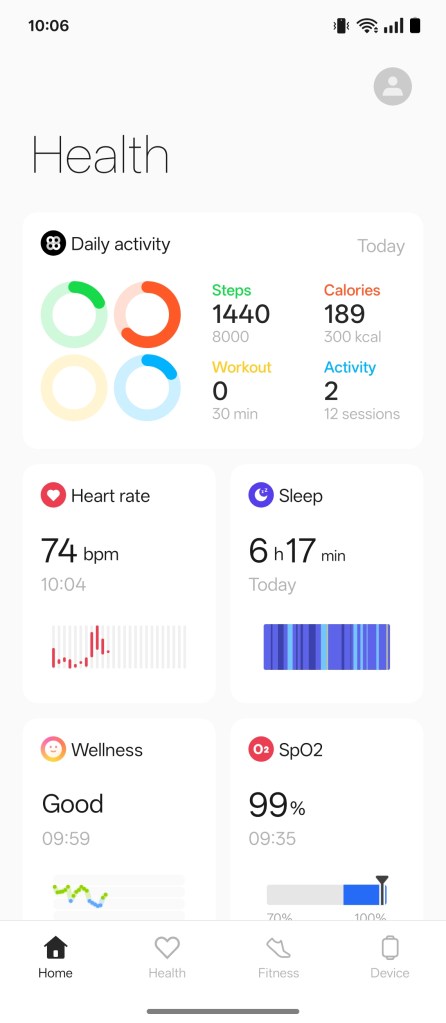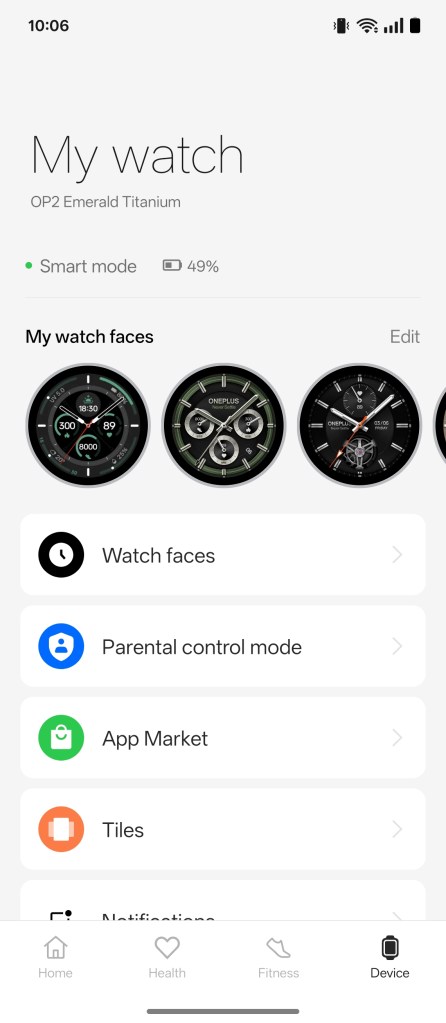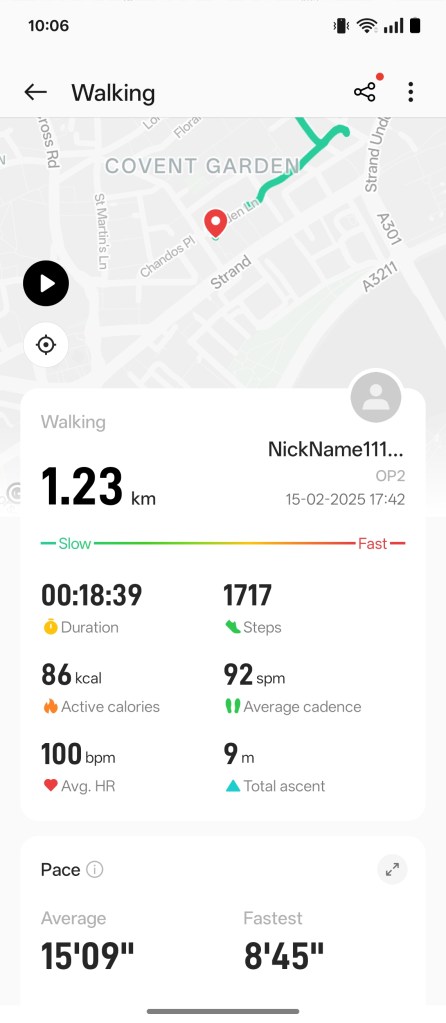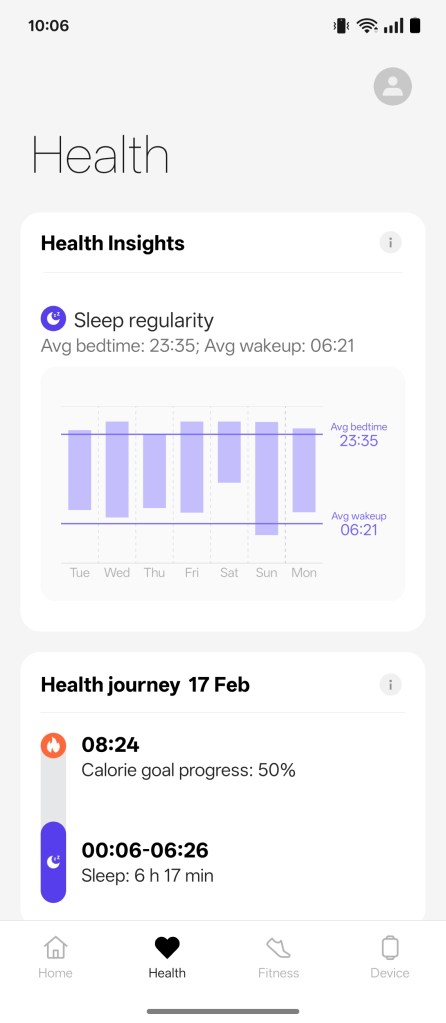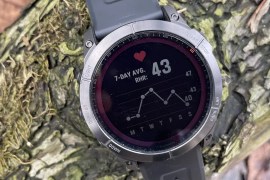OnePlus Watch 3 review: this wonderful wearable just keeps going
Wear OS battery champ also looks the part and is fab for fitness
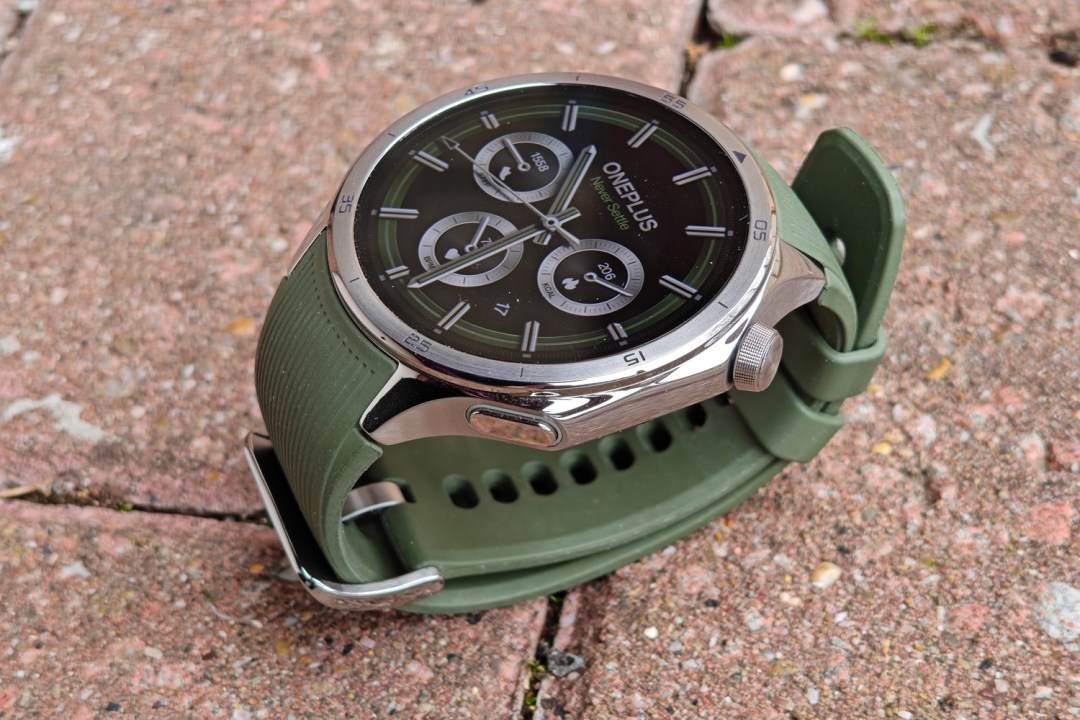
Stuff Verdict
A more refined take on what was already a fantastic Wear OS watch. The OnePlus Watch 3 lasts longer, looks slicker, and is even more fitness-focused.
Pros
- Outstanding battery life for a Wear OS watch
- Slick styling inspired by traditional timepieces
- More health tracking tech, with greater accuracy
Cons
- Some health features country-dependent
- Still just one size option and no LTE model
Introduction
We don’t talk about the original OnePlus Watch very much. At least, not kindly. But instead of slinking back into the smartwatch shadows, the firm’s defiant second attempt met critical acclaim. The styling was striking and the functionality much improved, but it was the seriously impressive battery life that made it stand out from the Wear OS competition. The new OnePlus Watch 3 is looking to capture that magic again, with more of a focus on fitness.
It keeps the same two-chip approach as last year, only now they’re paired with the silicon-carbon battery tech found in the OnePlus 13 smartphone for an even longer lifespan. Other highlights include a tougher titanium build, a new suite of health sensors, and a reimagined app to make all that data easier to digest.
It’s a flagship wearable in every sense, with a price hike over the previous generation – yet at $330 / £319 / €349 it undercuts the Google Pixel Watch 3 and matches the larger of Samsung’s two Galaxy Watch7 models. Does that make this the best Wear OS watch to date?
How we test wearables
Every smartwatch and fitness tracker reviewed on Stuff is worn 24/7 throughout the testing process. We use our own years of experience to judge general performance, battery life, display, and health monitoring. Manufacturers have no visibility on reviews before they appear online, and we never accept payment to feature products.
Find out more about how we test and rate products.
Design & build: tech meets tradition
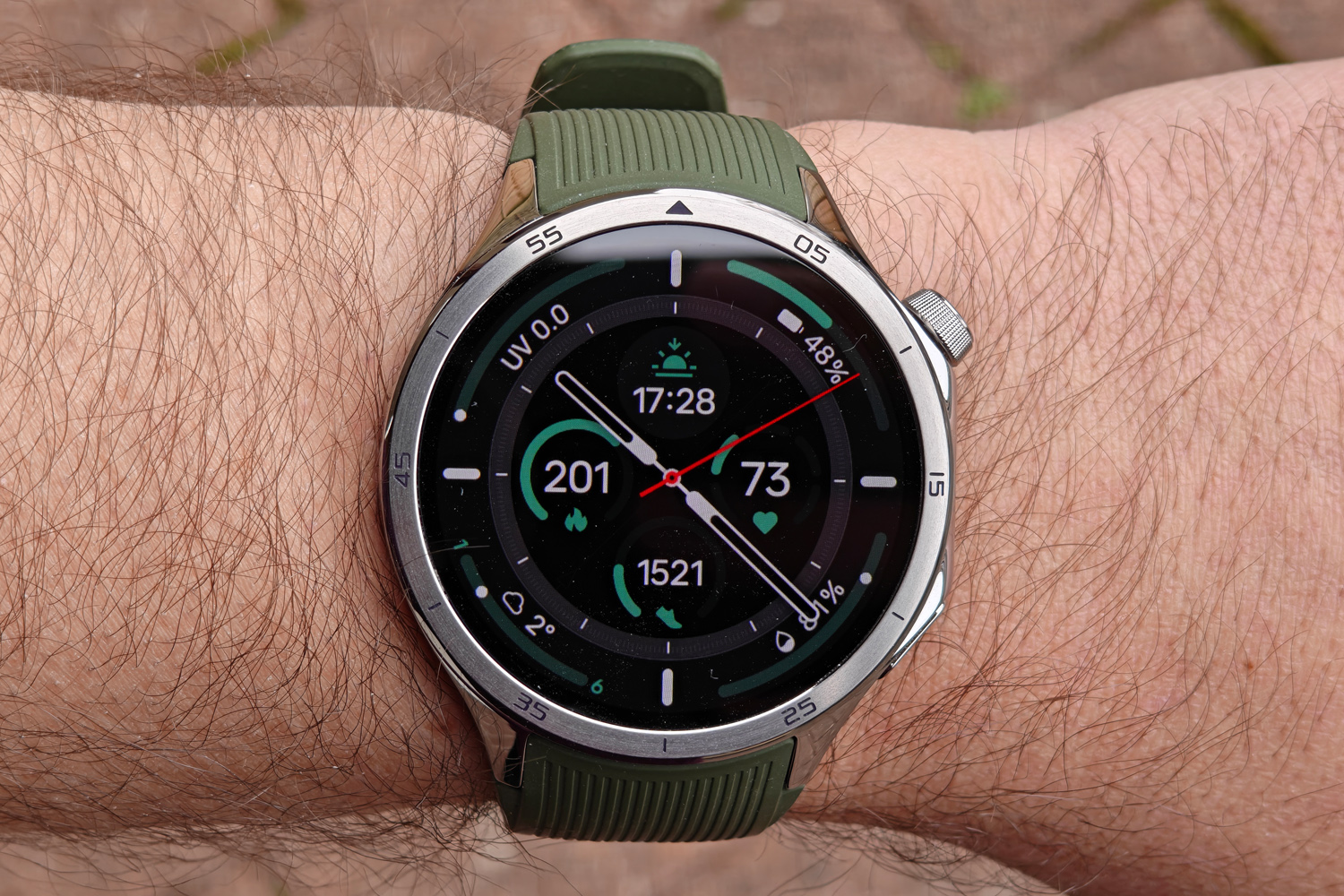

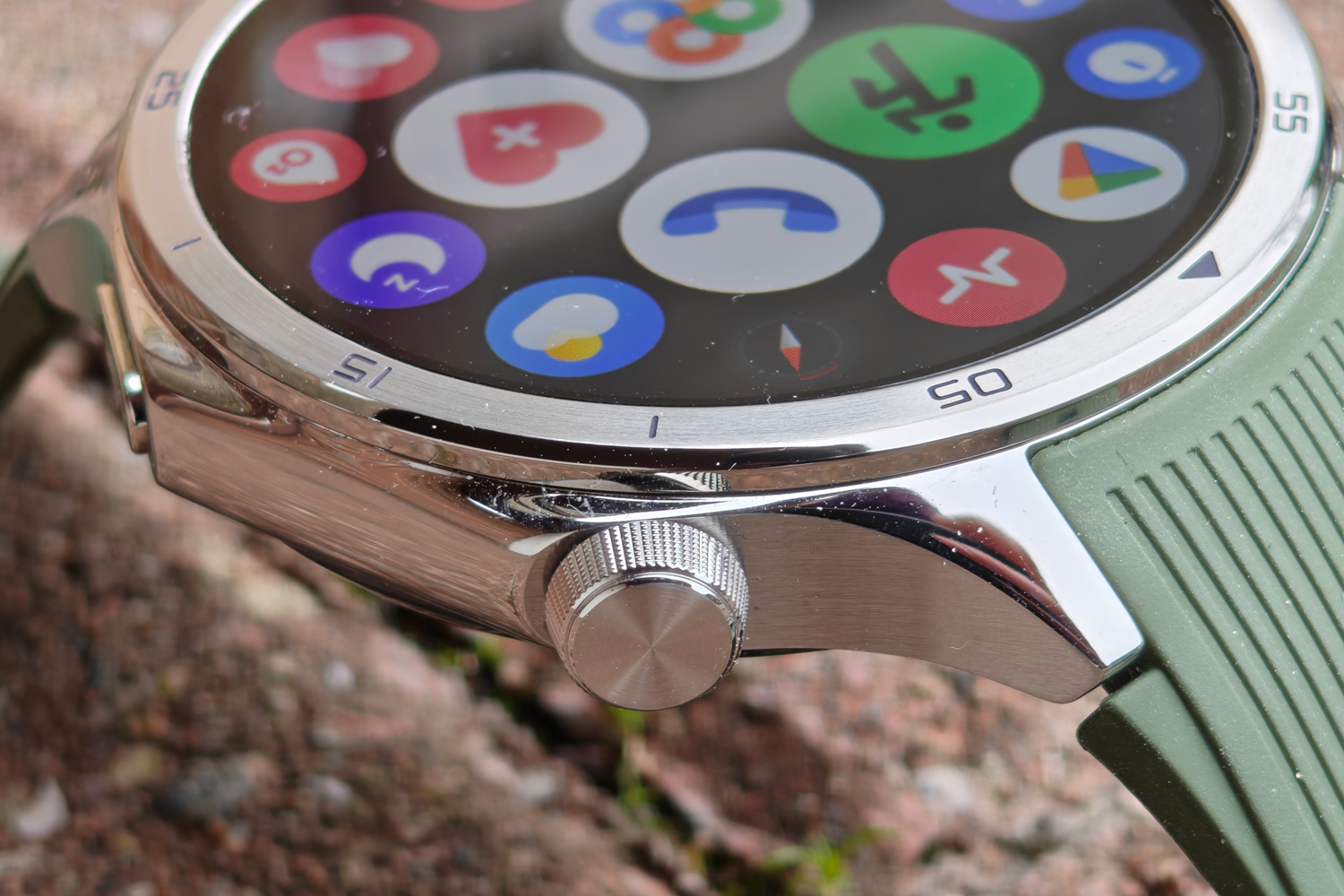
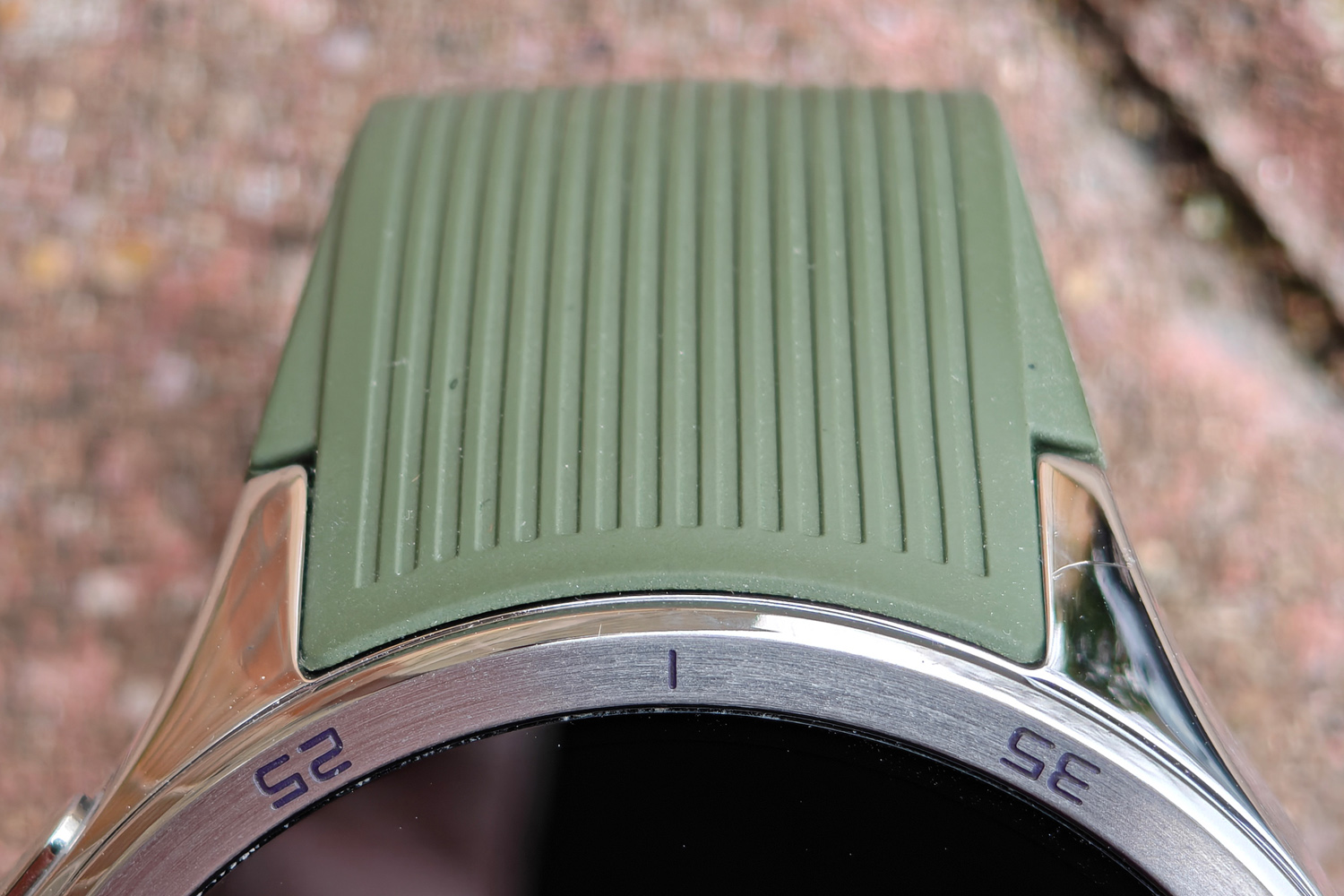
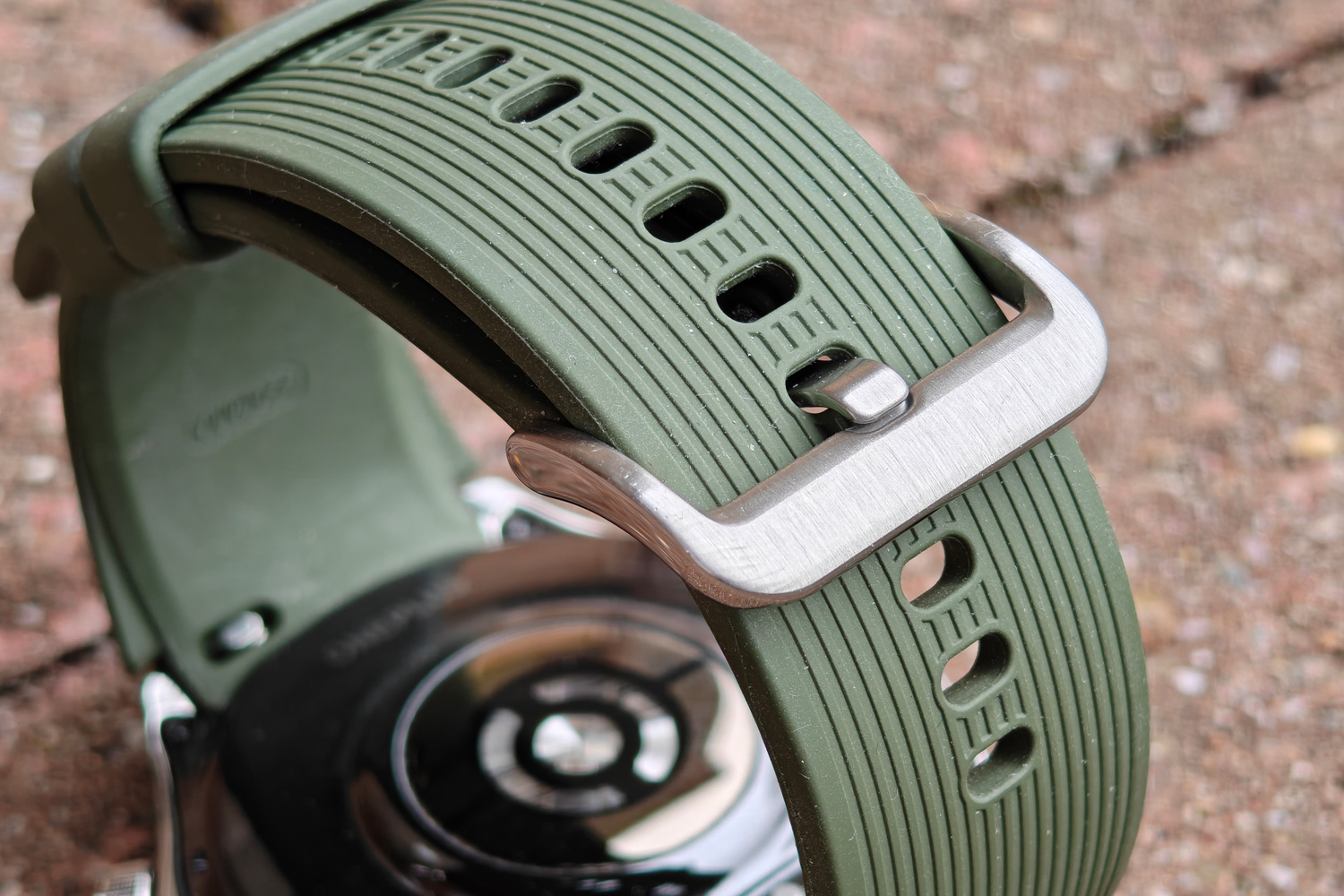
It’s amazing what a difference relatively small design tweaks can make. They might share the same stainless steel case, but the newer OnePlus Watch 3 proudly wears a a titanium outer bezel, complete with minute markers; it makes the outgoing Watch 2 look almost naked in comparison.
This is a suave-looking smartwatch, which gets closer to a traditional timepiece than anything in the Apple, Samsung or Google stables. I don’t mind that there’s only one size – 47mm – but it might look out of place on particularly small or skinny wrists. It filled mine far more elegantly than the chunky, squircular Galaxy Watch Ultra, with a weigh that feels substantial.
My Emerald Titanium review unit is the flashier of the two colour options, with a polished silver titanium bezel, lighter steel case and green fluororubber strap. The Obsidian Titanium model has a black strap to match its darker bezel and case. Both have quick release lugs and take widely used 22mm straps if you want to mix things up, though there’s nothing remotely low-rent about the included band. The traditional watch buckle makes it easy to get on and off.
I’m stoked that OnePlus made the Watch 3’s rotating crown functional. You could spin the crown on the old model until the cows came home, but it wouldn’t have any impact on the interface; now you can scroll through menus and check new notifications without swiping the screen. The flatter button beneath it takes you straight to the various workout modes, and has sensors built into it for health tracking.
OnePlus hasn’t skimped on sturdiness, with IP68, 5ATM and MIL-STD-810H ratings. That basically means the Watch 3 can withstand anything you can, from desert or arctic temperatures to 50 meter submersion and high humidity. The firm still recommends you don’t take it seawater swimming or deep diving on the regular – and to give it a thorough clean after each swim – but that’s true of most rival smartwatches too.
Screen: bigger and brighter
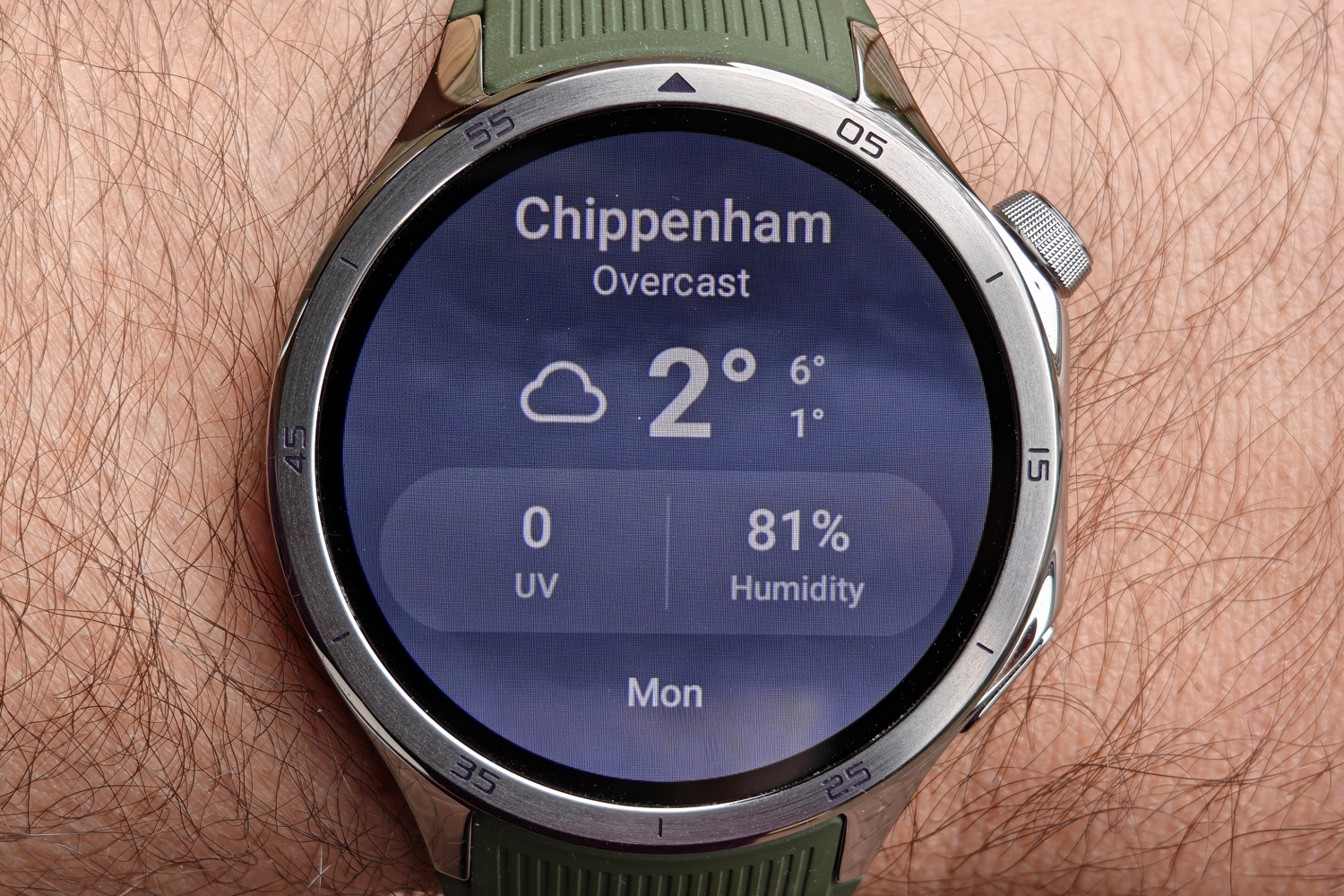
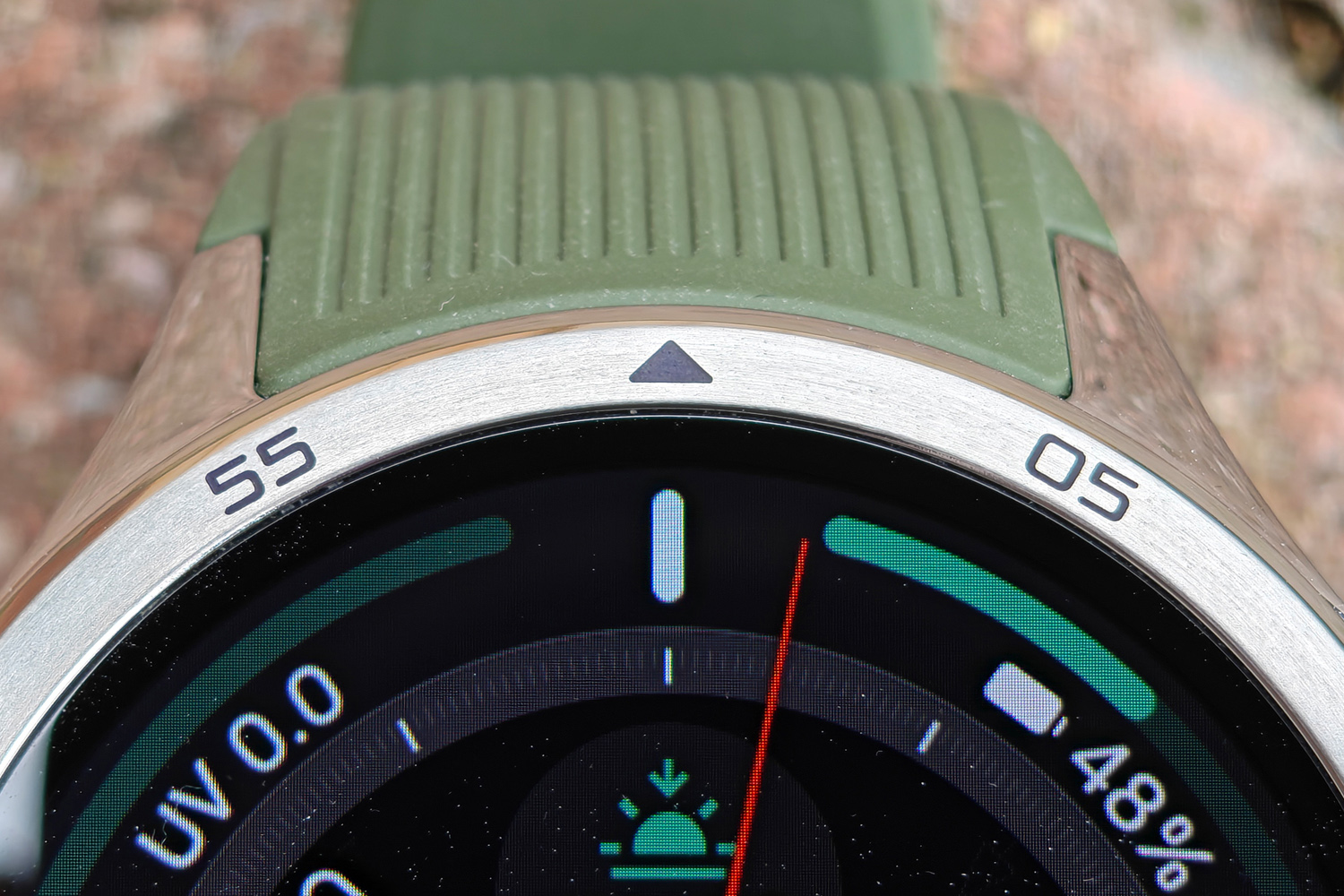
By swapping to a flexible OLED panel, OnePlus has managed to shrink the Watch 3’s bezels dramatically. It’s rocking a 1.5in face, up from 1.43in on the outgoing model, which I think gives the watch a lot more wrist presence. The screen doesn’t creep right up to the edge of the case like the Galaxy Watch Ultra, but there’s very little in it – and only a few full-screen apps make it obvious.
It only sits a hair beneath the titanium outer bezel, so seemingly isn’t as well protected against knocks as some rivals with chunkier cases – but sapphire crystal glass is as scratch-resistant as smartwatches get. In my few weeks of testing, it stayed as unblemished as when I first took it out of the box.
The 466×466 resolution ensures the numerous watch faces look crisp and detailed at arms’ length, viewing angles are outstanding, and colours are wonderfully vibrant. The automatic brightness being so quick to kick up the intensity helps give it even more visual impact.
With a peak 2200 nits, it shines more than twice as brightly as the OnePlus Watch 2. That puts it behind the Galaxy Watch Ultra and Apple Watch Ultra 2, sure – and you’ll only hit that figure in the dedicated Workout mode, with the watch using a lower setting everywhere else. Still, I was able to read the screen perfectly well while outdoors on the sunniest of days.
Always-on display fans will appreciate the LTPO tech, which lets the screen dip as low as 1Hz for maximum battery savings. You’re still looking at a 40% dip in lifespan by enabling it, but it’s a trade-off many are happy to make. It would’ve been nice if OnePlus had also added a night mode like the Apple and Samsung watches have, though.
Interface: you Wear it well
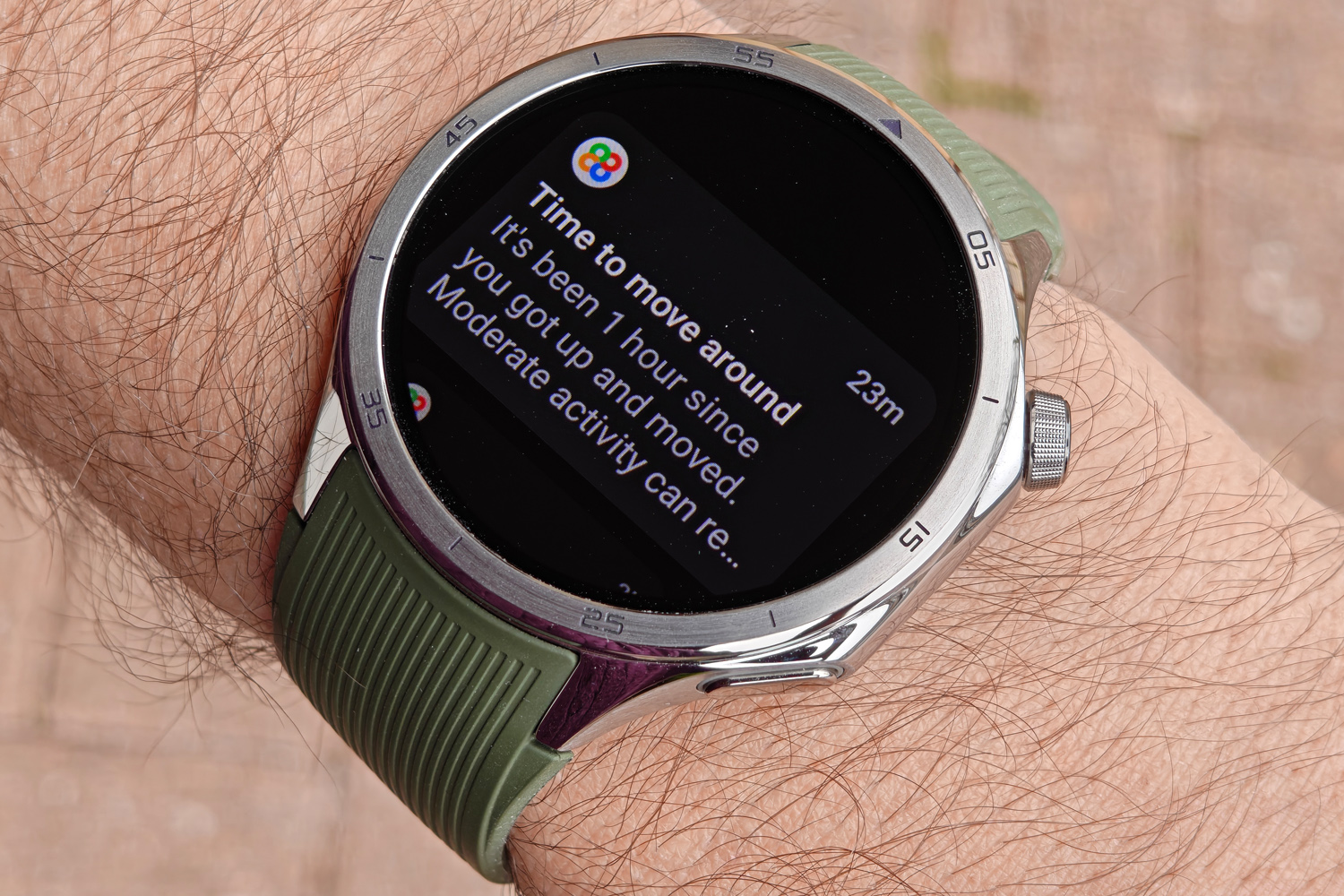
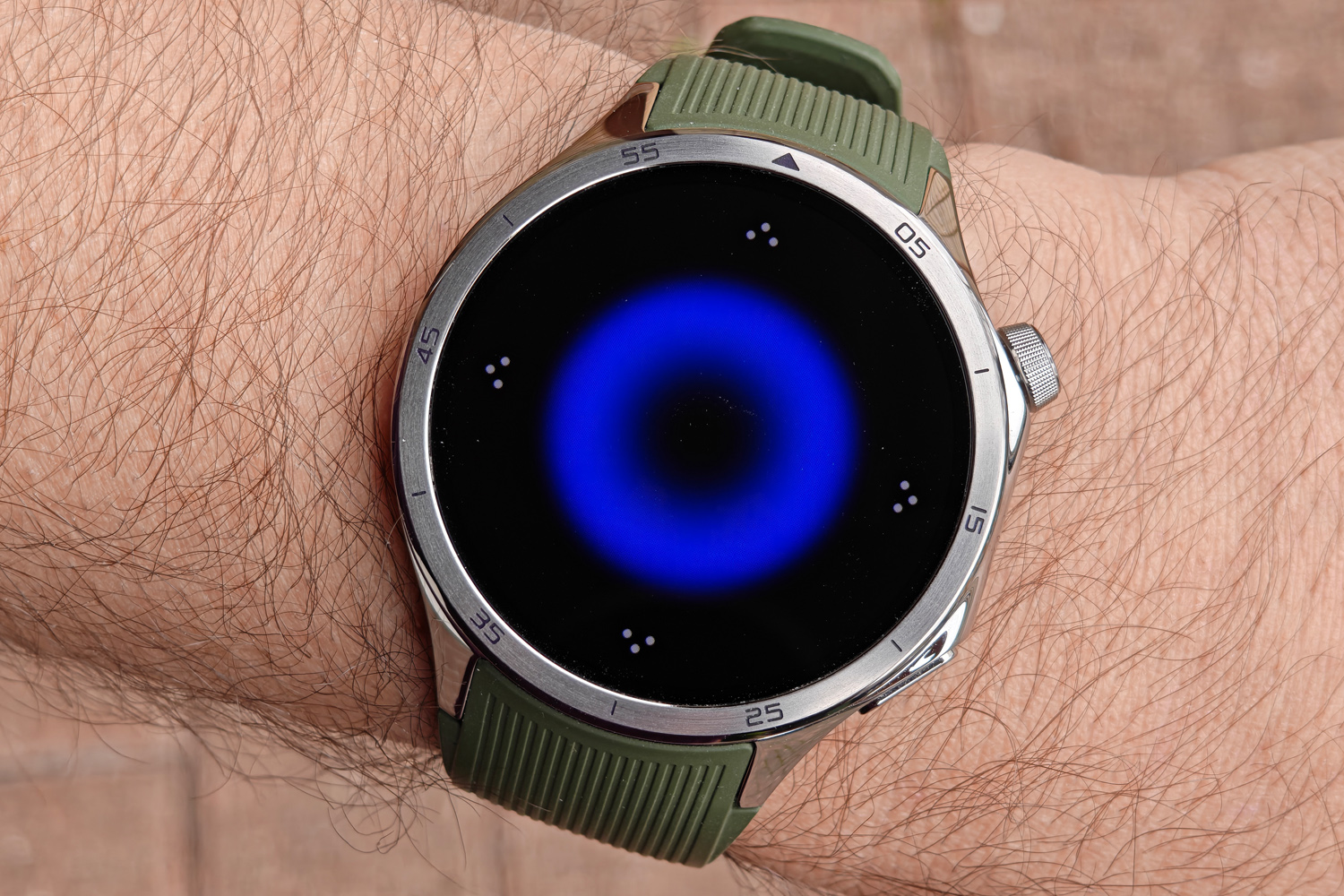
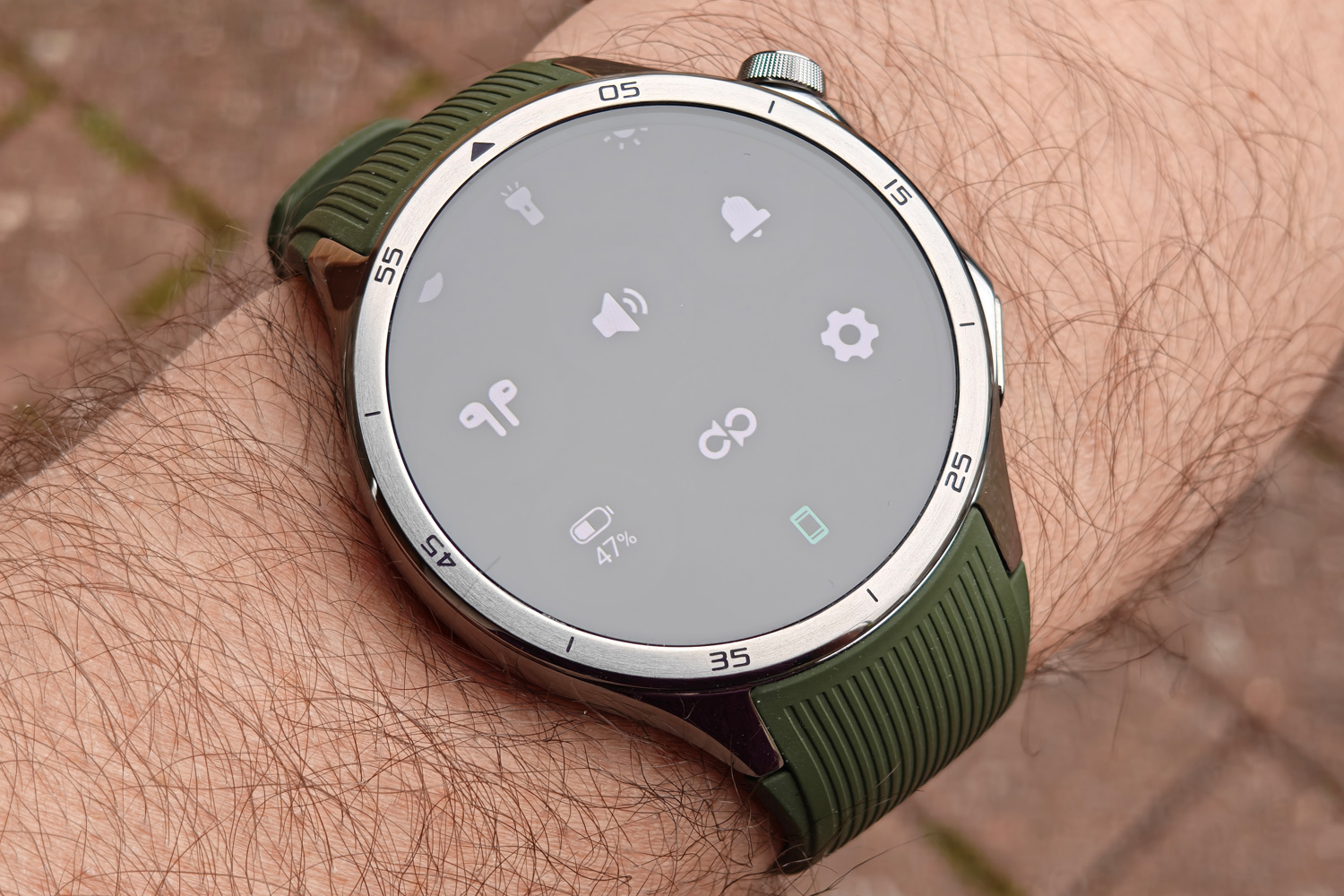
The Watch 3 arrives running a blend of Wear OS 5 and OnePlus’ home-grown RTOS software, which mostly kicks in when the power saving mode is switched on. For the most part you’re using Google’s UI, which is as slick as ever and has all the apps you’d expect, including the Play Store for downloading more.
NFC lets you use Google Wallet for on-device contactless payments, Google Maps and Calendar put directions and appointment reminders on your wrist, and Google Assistant can be woken with a tap-and-hold of the digital crown. OnePlus’ additions are mostly fitness-focused, apart from the camera remote shutter and video playback controller. Being able to scroll through YouTube Shorts or your TikTok feed without reaching for your phone is pretty neat.
The general interface hasn’t changed all that much between generations. I really like OnePlus’ app drawer, which lets you pinch in to reveal names beneath app in case you can’t find something specific by its icon alone. The various timles and widgets make the most of the top-tier display, and there’s a decent selection of watch faces too. Being able to use video clips as backgrounds is a nice touch.
Everything feels slick and responsive, with smooth animations and stutter-free swipes. Qualcomm’s Snapdragon W5 chipset is once again doing the heavy lifting, and remains about as good as it gets for Wear OS performance.
Setup and syncing is through the OHealth smartphone app, which is still Android-only. It has all the usual goodies, like a library of watch faces and tiles to set on the watch, workout history, and an overview of all your health stats. There are more granular insights, too – which is handy, given the Watch 3’s overhauled set of sensors.
Health & fitness: the doctor will see you now
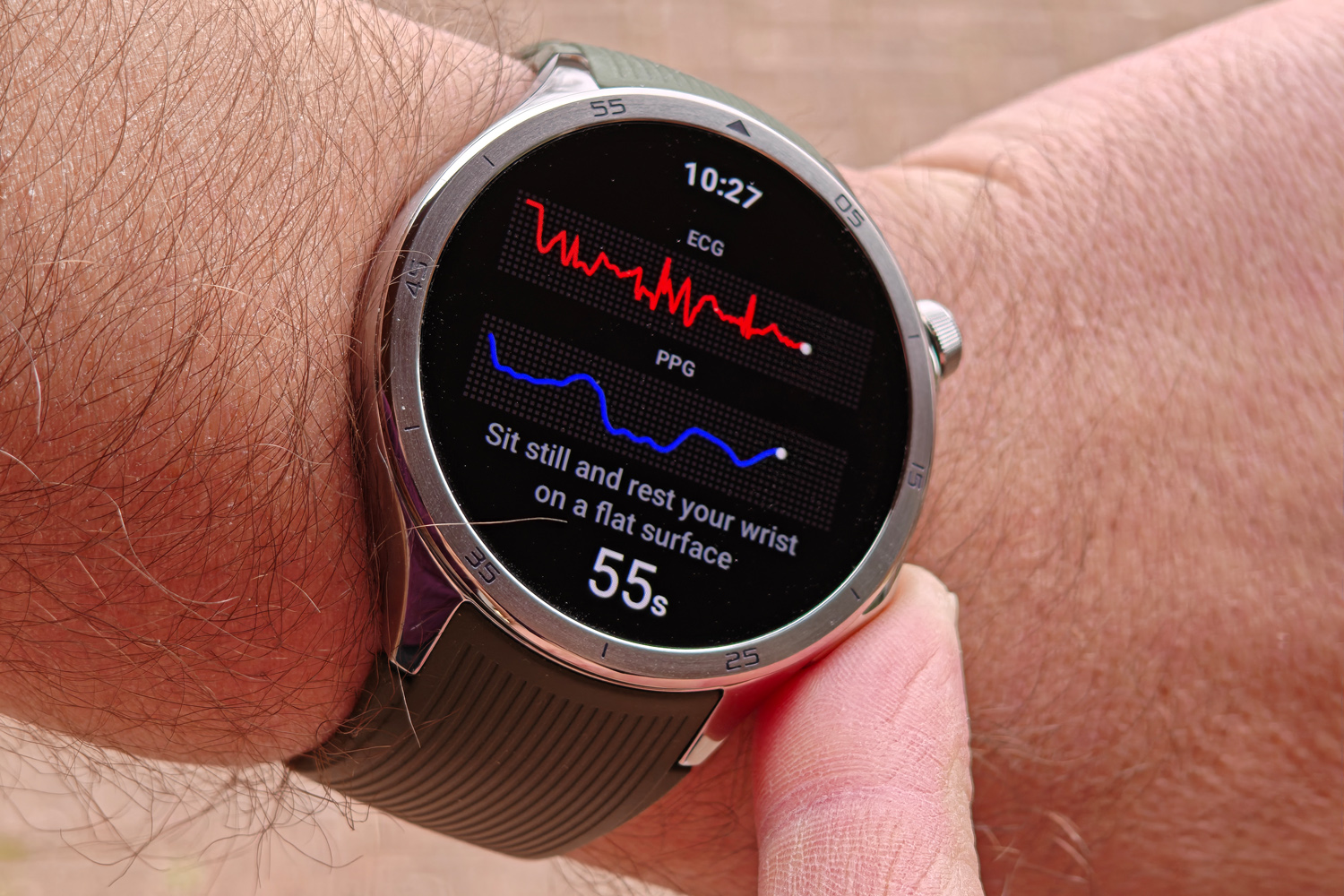
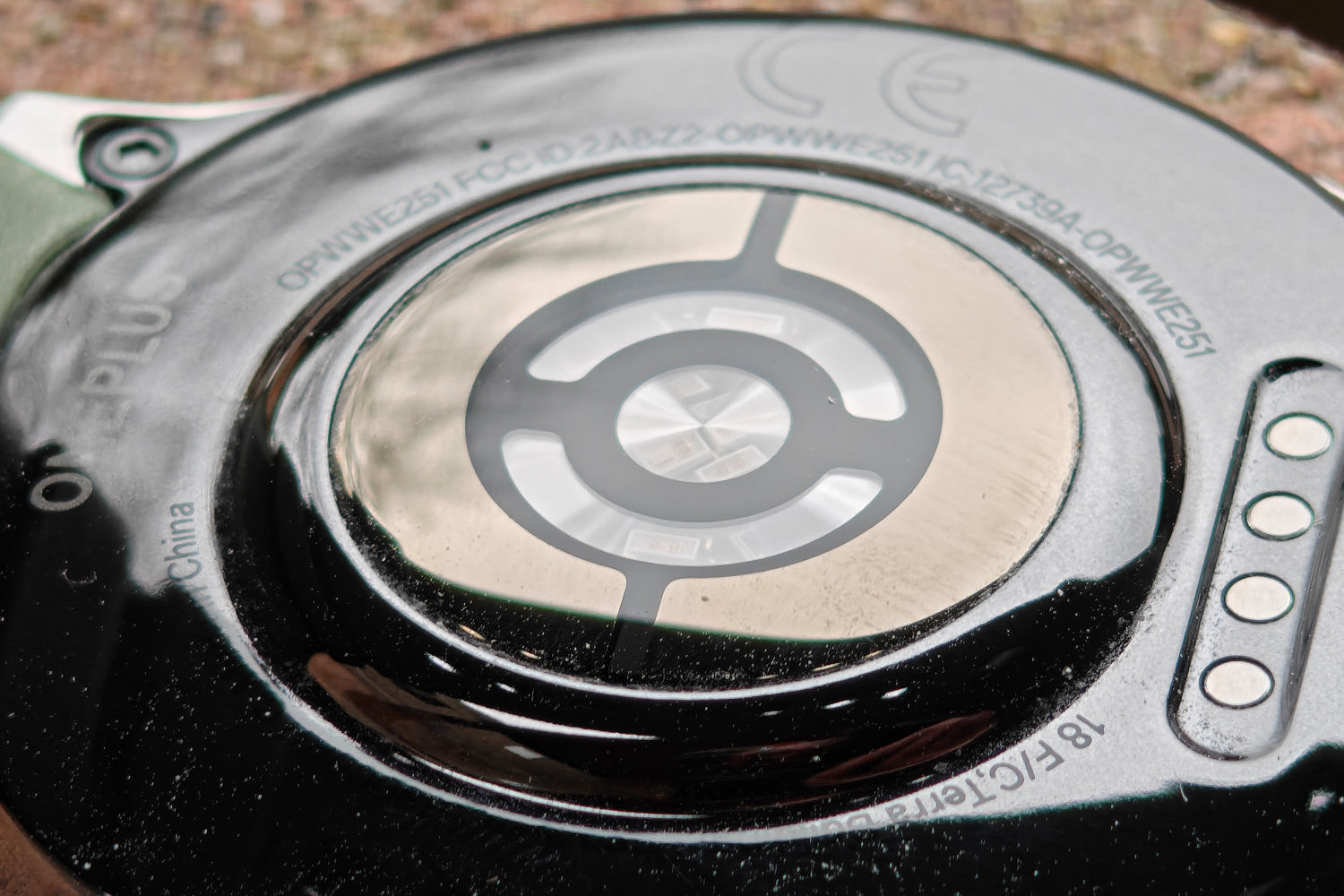
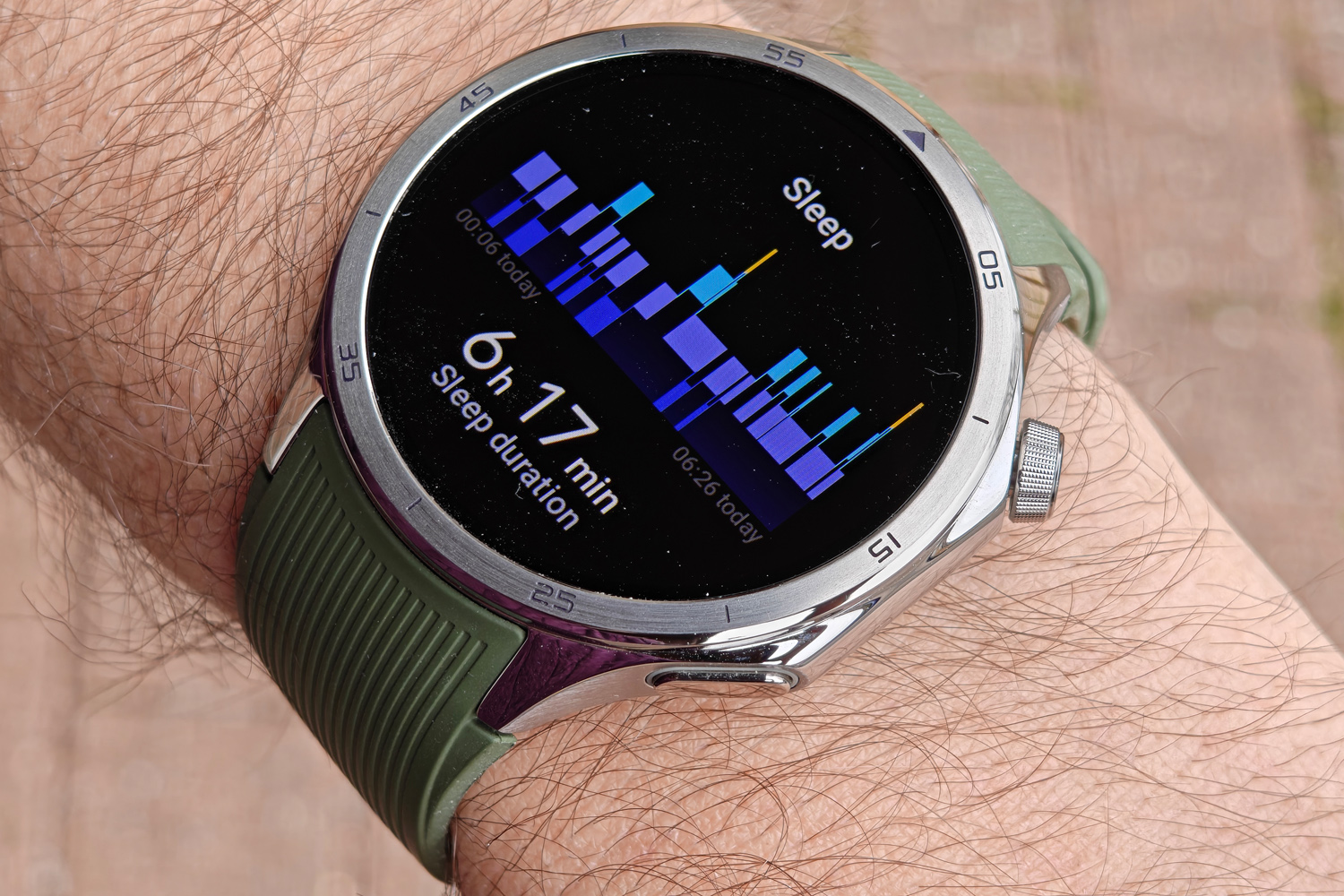
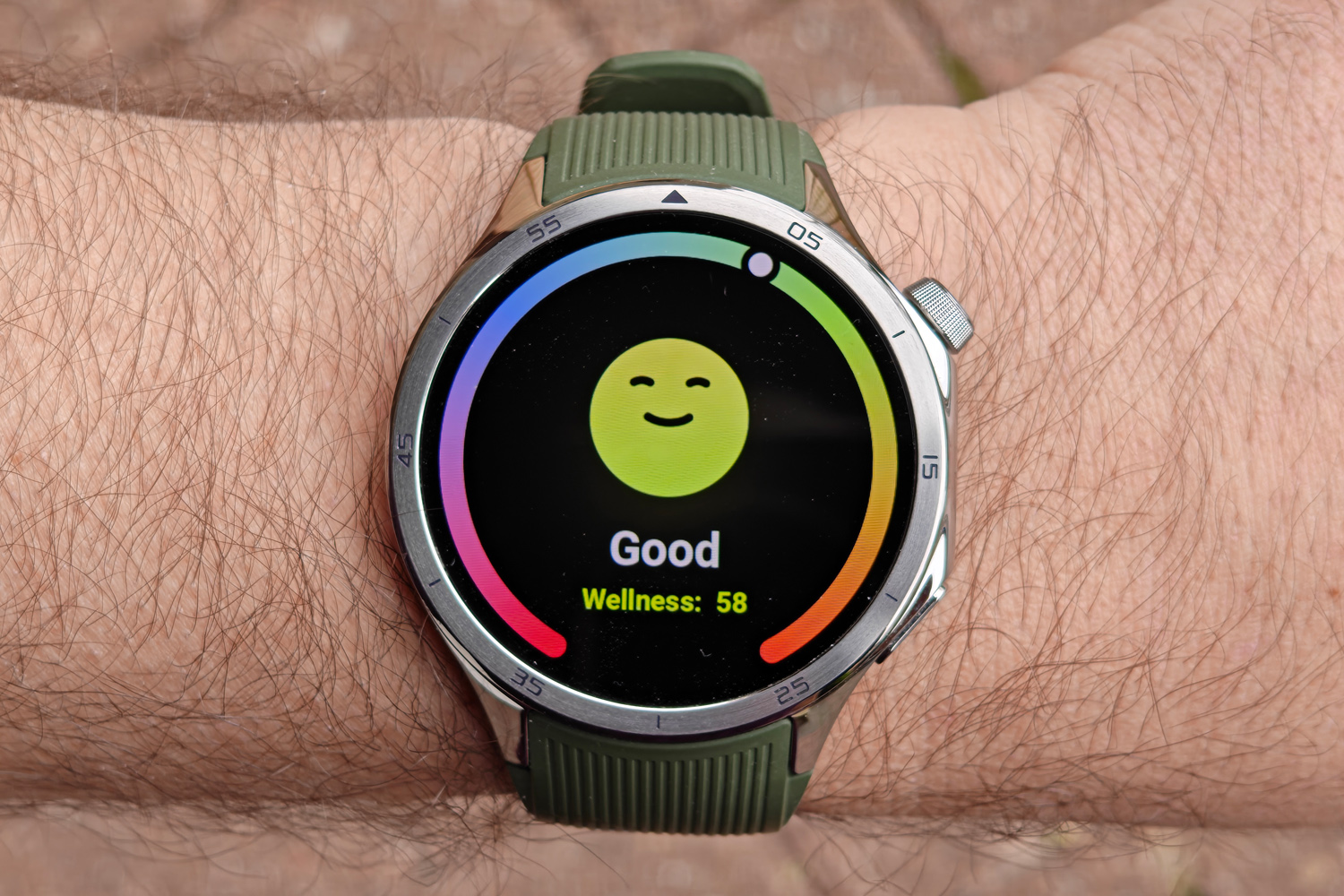
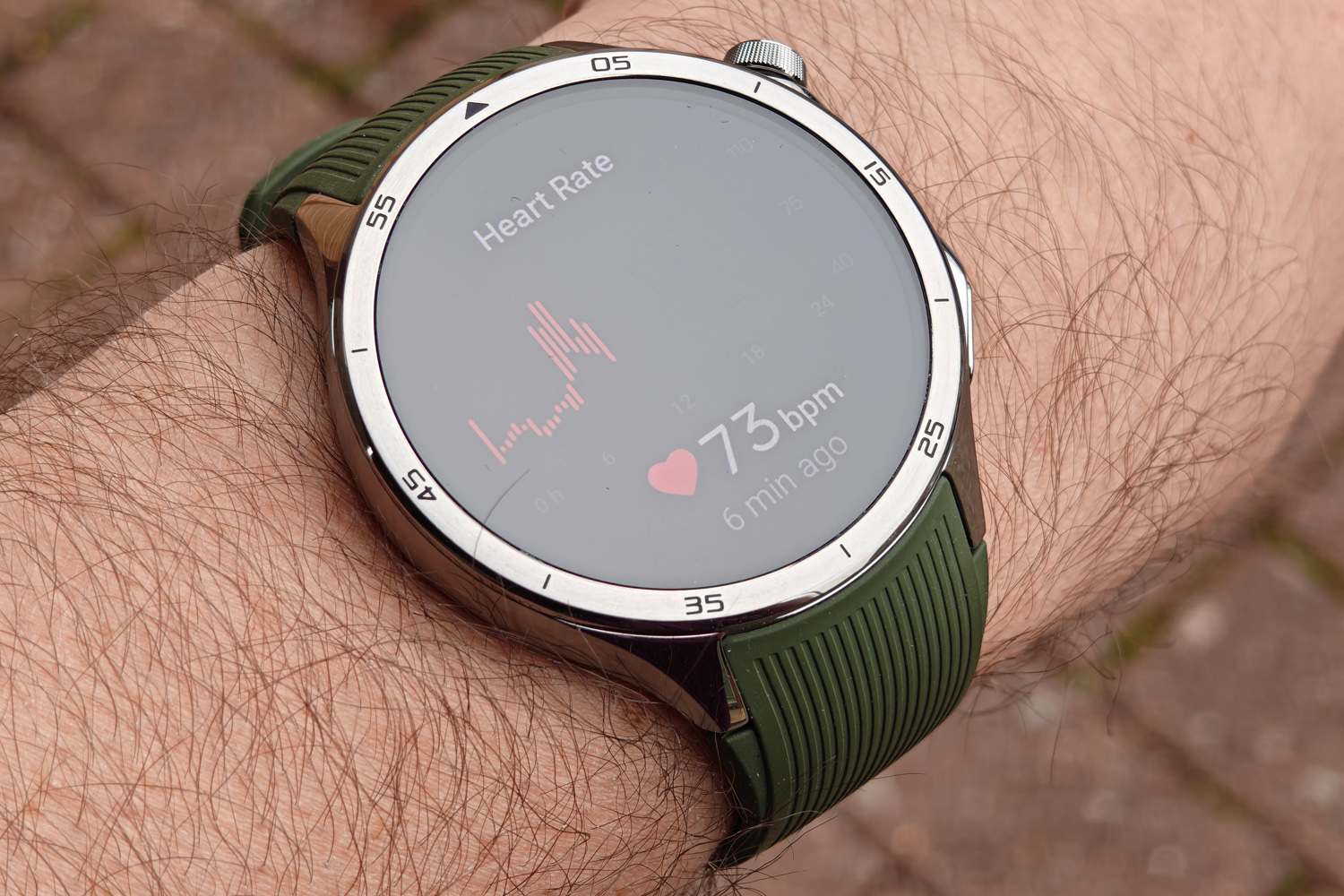
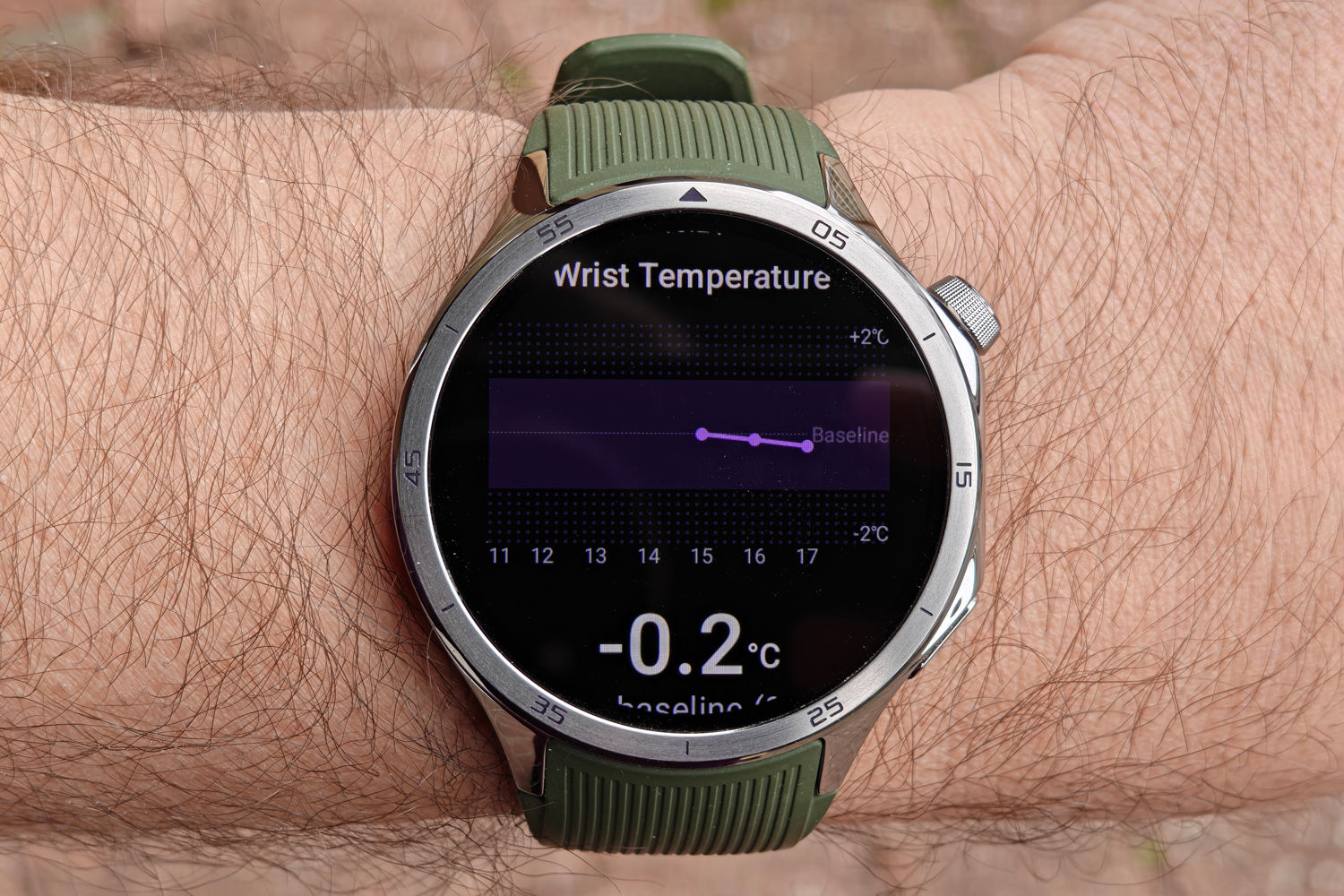
On top of the usual accelerometer and heart rate sensor (which has been upgraded with a new LED and rear cover glass), the OnePlus Watch 3 has a pulse oximeter and new wrist temperature sensor. There’s enough tech here to track blood oxygen levels, measure your vascular health, and perform an ECG scan – as long as you’re in a country that has granted medical approval.
For most of Europe that’ll mean Summer 2025, while the UK will have to wait until the Autumn. I was given access to a beta version for this review. After resting a finger on the lower button, an ECG reading takes about 30 seconds and can highlight early signs of heart arrhythmia and atrial fibrillation. While it didn’t flag anything I’d want to book a doctor’s appointment for, it’s a reassuring feature that brings OnePlus up to par with flagship smartwatch rivals.
The 60 second health check-in goes further, collecting heart rate, ECG, blood oxygen levels, mental wellness, wrist temperature and vascular age in one go. It also rolls in your most recent sleep data, which includes body movement, snoring patterns, breathing rate and heart rate variability. It’ll land in March as an over-the-air update, and massively simplifies monitoring all those health metrics.
It sounds good on paper, but the OnePlus Watch 2 didn’t have the greatest reputation for tracking accuracy. Based on my testing, and compared to a range of rivals, the Watch 3 is an all-round better performer. Step count and heart rate were consistent, and while it didn’t always detect I’d woken up in the night, it could tell the difference between a sofa session in front of Netflix and a mid-afternoon nap.
The new Broadcom dual-frequency GPS chip was quick to get a signal lock, and coped well with a mix of sports and activities. The Watch 3 can track more than 100, and will automatically detect running, walking, swimming, cycling, rowing and elliptical machine workouts. Some are a lot more comprehensive than others: when running it can track things like cadence, stride length and ground contact time, while the swimming mode records your 100-meter pace, number of strokes and number of laps, as well as distance covered. These are the sorts of metric you’d expect from a serious sports watch, so it’s great to have them in an all-rounder like this.
I’d still give the edge to a top-tier Garmin for fine-grain tracking, so pro athletes aren’t likely to be swayed, but the figures were otherwise very faithful to how much work I was putting in. It was pinpoint accurate on a walk through central London, too, which bodes well for GPS tracking in other built-up areas.
Battery life: five alive
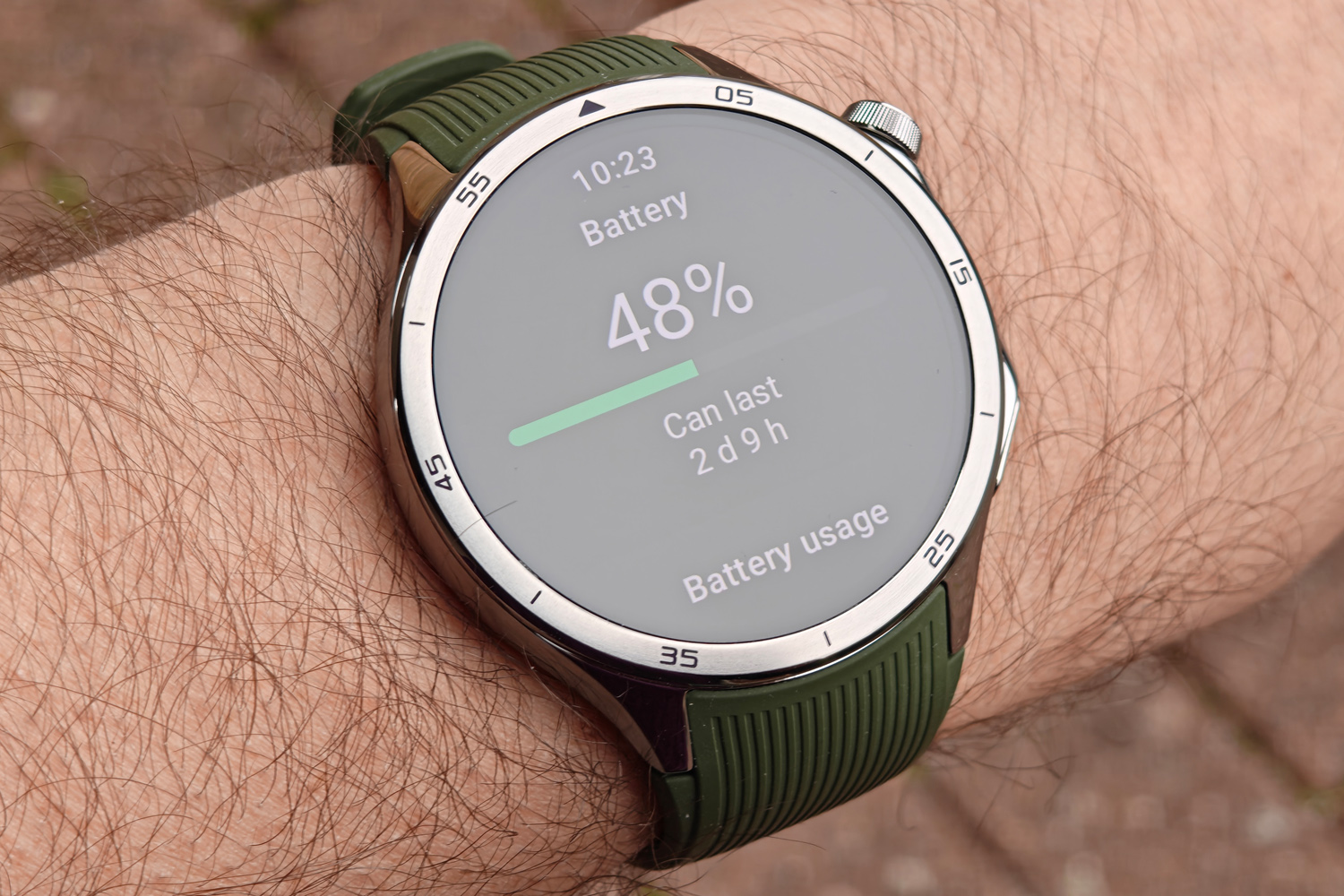
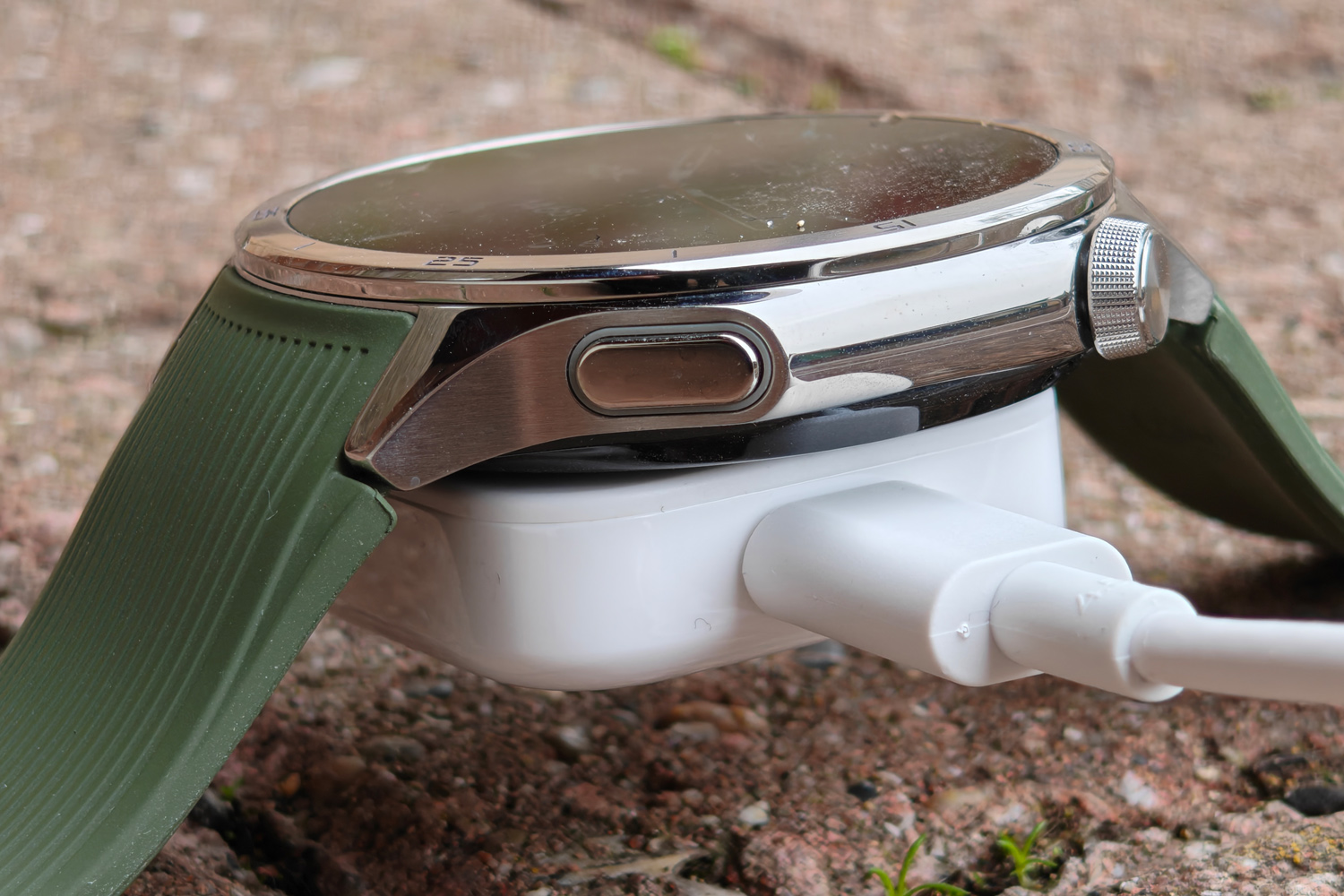
The outgoing OnePlus Watch 2 basically flipped the script on Wear OS battery life. That second, low-power CPU helped it best all comers, including the Mobvoi TicWatch 5 Pro and its clever two-layer display. For 2025, the firm has borrowed silicon-carbon cell technology from its smartphone division, boosting capacity by almost 30% to a generous 631mAh.
Add in the more efficient BES 2800 chip for behind-the-scenes tasks, and you’re looking at the new Wear OS longevity champ. For regular use, with a mix of exercise tracking, sleep monitoring, Bluetooth calling, incoming message alerts and onscreen swiping, I comfortably made it into a fifth day of wear before I needed to plug in.
Admittedly that was with the always-on display mode disabled – but even when I turned it on, I was still lasting three days per charge. That’s a day longer than I managed from a Galaxy Watch Ultra with its always-on screen in action, and puts Google’s Pixel Watch 3 firmly in the shade.
Power Saver mode takes things up another notch, promising a colossal 16 days – up from twelve on the last-gen model – by stripping functionality back to notifications and health tracking, via RTOS. At the time of writing I’d not actually had the watch long enough to test that longevity claim, so will have to report back later.
The charging cradle can fully refuel the watch in about an hour, or add enough juice for another day of wear in about ten minutes.
OnePlus Watch 3 verdict
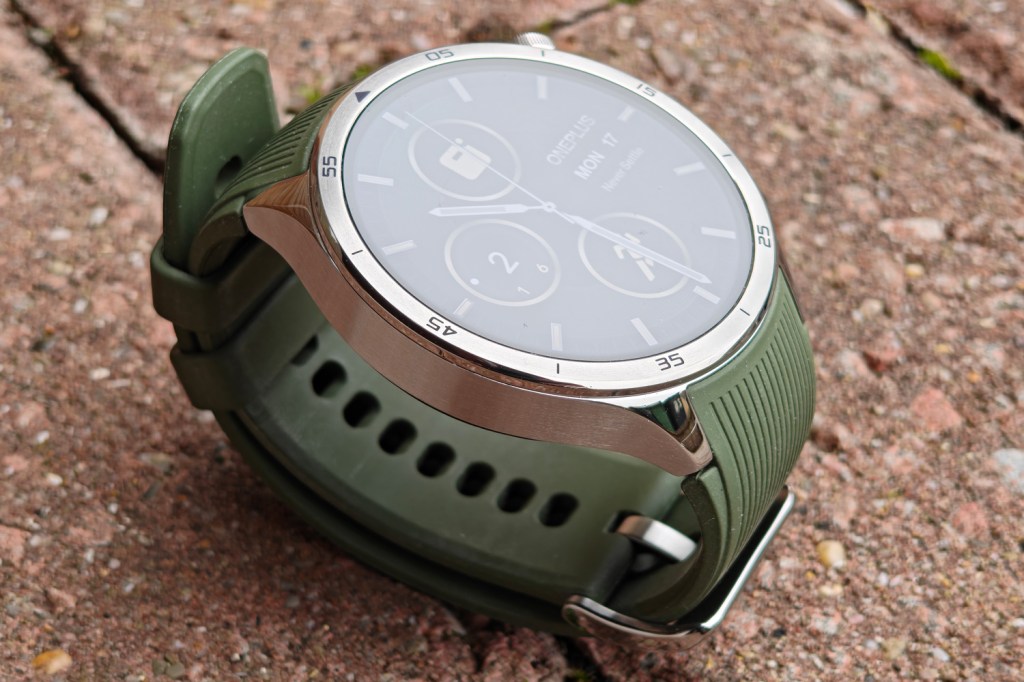
If the Watch 2 was OnePlus hitting its stride, then Watch 3 must be a victory lap. This is a simply superb wearable, with the best battery life of any Wear OS watch I’ve tried. The larger screen is a treat for the eyes, the styling is subtly yet meaningfully improved, and the functional crown has been a long time coming.
Health tracking has generally taken a big step forward, although when some of the more exciting features actually land will vary depending on where you live. Some might bemoan the lack of size options or LTE connectivity, but those will be minor quibbles for most.
With price also largely on its side, this should be top of any Android smartwatch shopper’s list.
Stuff Says…
A more refined take on what was already a fantastic Wear OS watch. The OnePlus Watch 3 lasts longer, looks slicker, and is even more fitness-focused.
Pros
Outstanding battery life for a Wear OS watch
Slick styling inspired by traditional timepieces
More health tracking tech, with greater accuracy
Cons
Some health features country-dependent
Still just one size option and no LTE model
OnePlus Watch 3 technical specifications
| Screen | 1.5in 466×466 LTPO AMOLED |
| CPU | Snapdragon W5 + BES2800BP |
| Memory | 2GB RAM |
| Storage | 32GB |
| Operating system | Wear OS + RTOS |
| Sensors | ECG, wrist temperature, optical heart rate, optical pulse oximeter, geomagnetic sensor, light sensor, barometer, accelerometer, gyroscope |
| Connectivity | Wi-Fi, Bluetooth, NFC, GPS |
| Battery | 631mAh |
| Durability | IP68, MIL-STD-810H, 5ATM |
| Dimensions | 47x48x11.75mm (watch body, excluding lugs/sensor area) 49.7g / 81g (watch body only / with wrist strap) |

